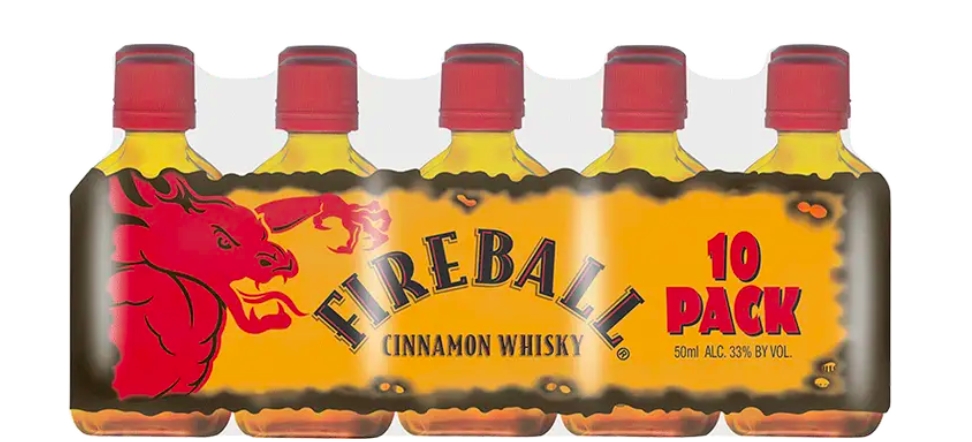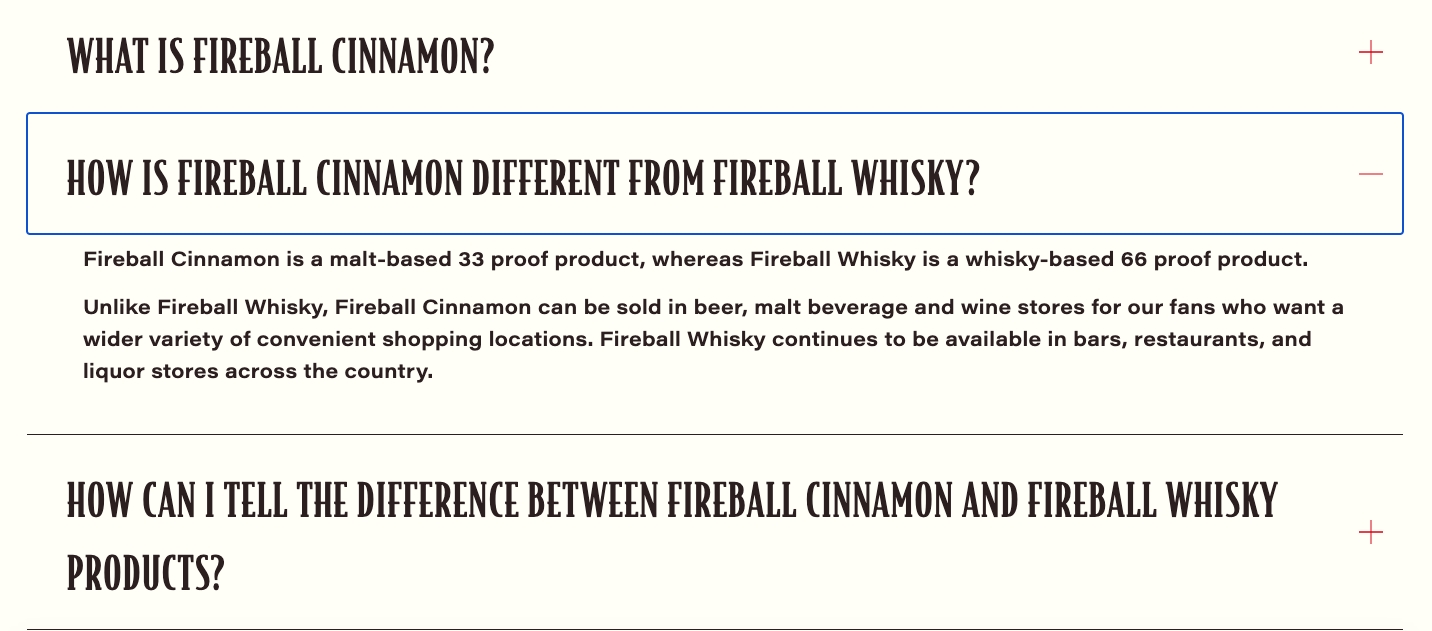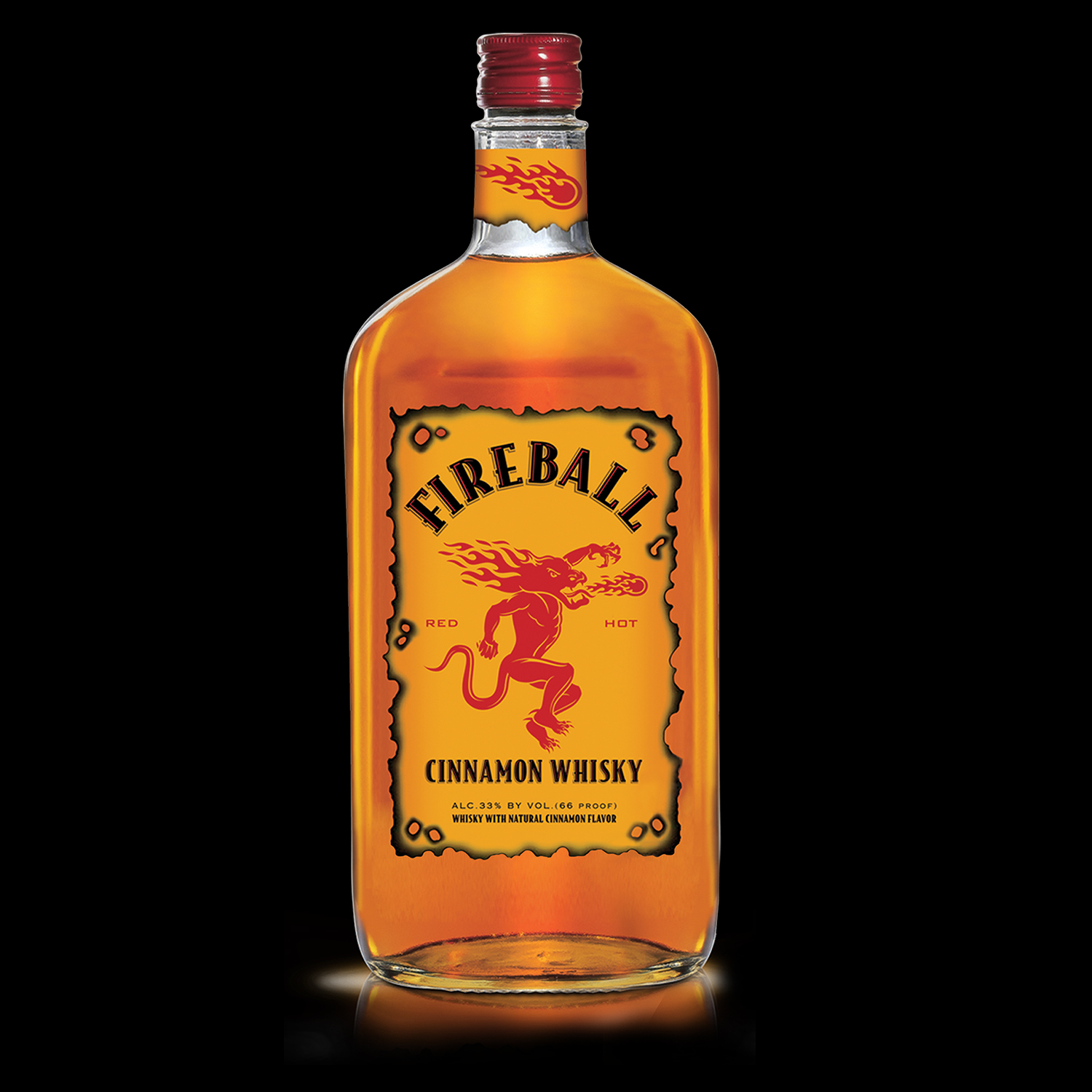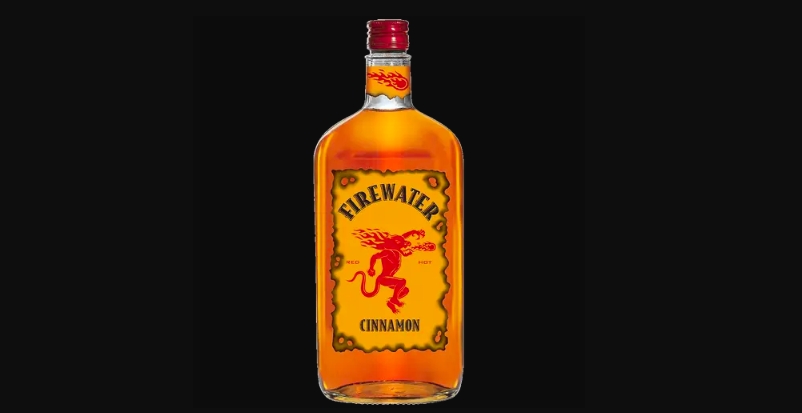Fireball Whisky is a divisive drink. There are those who absolutely adore the cinnamon whisky liqueur. Then there are the rest of us who can go our whole lives without putting the boozy cinnamon candy to our lips. For the latter group, it’s easy to ask “what even is Fireball whisky, anyway?” Also: “why do people love it so damn much?!”
The fact of the matter is, there are a lot more people in the first camp than in the second one, considering that Fireball’s sales are astronomical, especially in the U.S. But Fireball is also in the middle of a firestorm (sorry) right now, thanks to a seemingly confusing list of ingredients on one of the brand’s key expressions. We’re going to break down the story behind this massively popular brand below — looking at what Fireball is and the brand’s expressions. Then we’ll dive into the issues some consumers and lawyers have with the brand and why they’re suing for $5 million in damages.
Let’s get into it!
Part 1 — What is “Fireball”?

Let’s start at the beginning. Fireball is a brand that’s owned and operated by the Sazerac Company, which is a massive, privately owned spirits conglomerate based out of New Orleans. If you’re in the spirits world at all, you know of the Goldring family who runs the business to this day. They make everything from the country’s best-selling discount brands of booze (like Fireaball) to the most elite American whiskeys in the world (Pappy, Weller, Taylor, etc.).
Fireball’s history, on the other hand, is an invention of 1980s Seagrams. The elixir blended cheap Canadian “whisky” with cinnamon syrup and sweeteners. Sazerac bought the rights to “Dr. McGillicuddy’s Fireball Whisky” in 1989 and changed the name to “Fireball Cinnamon Whisky.” Cut to the early 2010s and Fireball Cinnamon Whisky became insanely popular in gas station liquor stores, dorm rooms, and eventually every party bar across the country — to the point that it outsold Parton Tequila, Jagermesiter, and even Jameson Irish Whiskey.
It was a perfect storm of easy access, low price, pop culture fandom, and social media dominance. This led to Fireball’s iconic status by the end of the last decade.
https://www.instagram.com/p/CnVTBKSP7P4/
But what’s in it? According to Sazerac, Fireball Cinnamon Whisky is made with a mix of Canadian Whisky — likely from their Collingwood, Ontario distillery where Canadian Mist is made — mixed with cinnamon syrup and sweeteners under the super vague heading of “flavors.” The whisky is sent down from Canada in tanks and mixed in Lousiville, Kentucky, where it’s later bottled and distributed to a bar or gas station near you.
In essence, the addition of syrups and sweeteners doesn’t stop Fireball from being a “whisky,” no more than adding the same elements to Jim Beam or Jack Daniel’s stops their cinnamon products from being “whiskeys.” We’re talking about “flavored” whiskeys/whiskies; all of which are technically “liqueurs” — any spirit with additives such as spices, fruits, sweeteners, and so forth with lower alcohol content. At the end of the day, the use of “flavored whisky” is interchangeable with “liqueur” if the booze is made with “whisky.”
It’s the same with flavored rum. Malibu is labeled as “flavored rum” that’s also a “liqueur.”
Fireball the brand makes more than one expression. They also make “Fireball Cinnamon.” Fireball Cinnamon is a cheaper alternative that Sazerac produced to be sold in wine and beer shops that don’t have liquor/spirit licenses. To do this, Sazerac supplements the Canadian whisky in the original with “malt beverage” (like many a hard seltzer) or a wine base with the addition of “whisky and other flavors” along with sweeteners. This is where the legal kerfuffle lies. (We’ll dive into that very soon, I swear.)
Basically, Sazerac Company saw a huge market that they couldn’t get their beloved Fireball Cinnamon Whisky into — stores with beer and wine licenses but not liquor licenses. So they juked the recipe and conquered that market too. According to Fireball’s website, that means Fireball expanded to 170,000 more stores across the U.S.
Part 2 — Why Is Sazerac Being Sued Over Fireball?

According to The New York Times, Sazerac Company is being sued because their labeling of “Fireball Cinnamon” is misleading people to think they’re drinking a “whisky” product when they are not.
The lawsuit claims that Fireball Cinnamon is “false and misleading” and the bottles “appear similar” to the original Fireball Cinnamon Whisky. Let’s have a look!


Look, if you’re grabbing a mini at a gas station, you can be forgiven for not seeing “whisky” missing from the label. But the legal claim is that it goes beyond that to what’s on the ingredients list — or what’s missing — on Fireball Cinnamon.
The ingredients on Fireball Cinnamon read, “malt beverage with natural whisky and other flavors and caramel color.” The lawsuit claims, according to The New York Times, that “natural whisky and other flavors” is “a clever turn of phrase” to hide that Fireball Cinnamon does not have whisky in it.
Maybe?
Clearly, the Sazerac Company should have used the good ol’ Oxford Comma here making the ingredients the following “malted beverage, natural whisky and other flavors, and caramel color.” Or, to point a finer point on it, they could have written “malted beverage with natural whisky flavors, other flavors, and caramel color.” Whether you consider this an intentional misrepresentation meant to deceive or just shoddy copywriting is really in the eyes of the beholder. Certainly, corporations aren’t against tricking the public with intentionally obtuse phrasing. At the same time, Fireball is not known for attracting the most discriminating drinkers, regardless of what they have on the label.
The wording of those ingredients and the nearly identical packaging of the two expressions has led to a five million dollar lawsuit against the Sazerac Company. And with the confusing ingredients list, you can see this going in the plaintiff’s direction. But why even go to court? Sazerac will surely settle, add some commas for clarity, and move on with their billion-dollar enterprise. This is “barely a speeding ticket” for a company this big.
On the other hand, the label clearly doesn’t say “whisky” on the front of the Fireball Cinnamon product. And bad punctuation and sneaking wording aside, the ingredients do say “whisky flavors” in a ham-fisted way (if you’ll be so kind as to carry the subject “flavors” back to the modifier “whisky,” which is… not great writing and makes for difficult reading). However, things are spelled out pretty clearly on their website.
So… who knows? Maybe Sazerac will duke this one out in front of a jury of their die-hard and apparently pissed-off peers.







